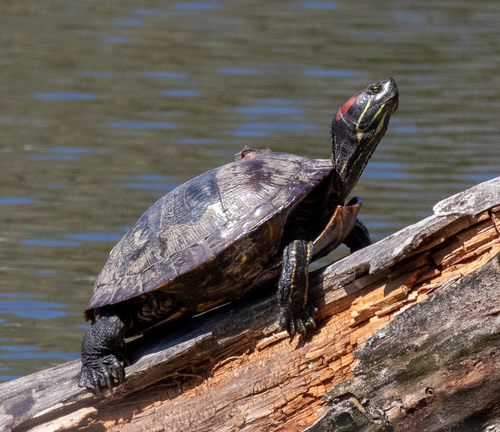
Red-eared slider
The red-eared slider, Trachemys scripta, features vivid red eye stripes and thrives in calm freshwater habitats. Known for basking and omnivorous eating, its adaptability makes it both a popular pet and an invasive species, impacting ecosystems when introduced beyond its native range.
20-30 years
Lifespan
Least Concern
Conservation Status
Stable
Population Trend
Distribution Range of the Red-eared slider
Trachemys scripta, commonly known as the pond slider, is native to the southeastern United States. It is primarily found in the Mississippi River Basin, extending to the Gulf of Mexico and into Texas, as well as other Gulf Coast states. The species is naturally found in states such as Louisiana, Mississippi, Alabama, Georgia, Florida, and South Carolina, among others.
Red-eared slider's Habitat
Environmental Conditions
Trachemys scripta thrives in freshwater environments such as ponds, swamps, lakes, and slow-moving rivers with soft, muddy bottoms. The species prefers habitats with abundant aquatic vegetation, which provides food and shelter. It is adaptable and can also live in man-made environments like canals and reservoirs, provided there is access to water and basking sites.
Ecological Niche
As a semi-aquatic turtle, Trachemys scripta plays a crucial role in its ecosystem. It is both an herbivore and a carnivore, feeding on aquatic plants, insects, fish, and small amphibians. Its diet helps control the populations of its prey and contributes to the health of aquatic ecosystems. The turtle's basking behavior is important for thermoregulation, which also influences its activity and feeding patterns. Additionally, its presence provides food for predators such as birds, mammals, and larger reptiles.
Copyright @ Nature Style Limited. All Rights Reserved.
 English
English